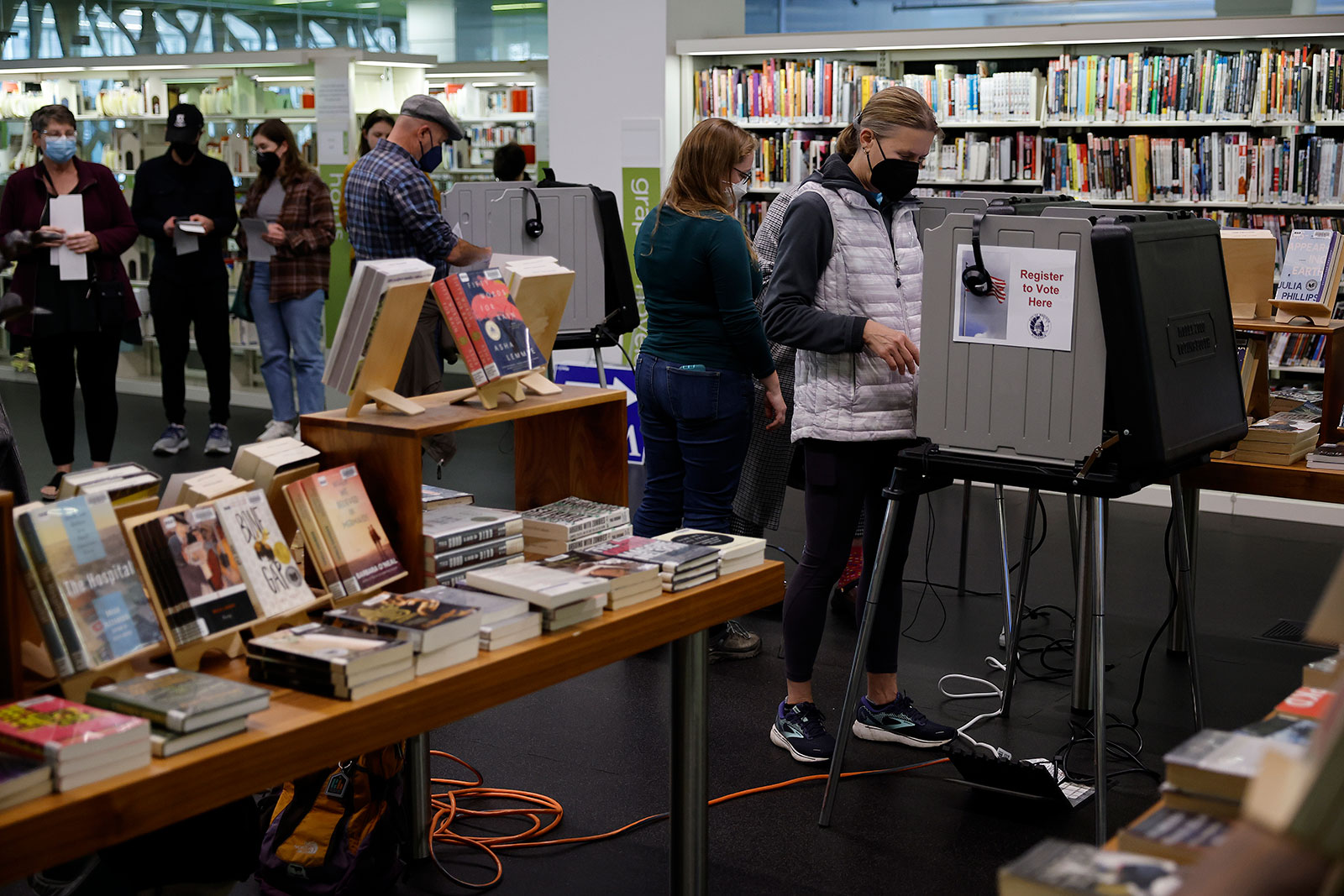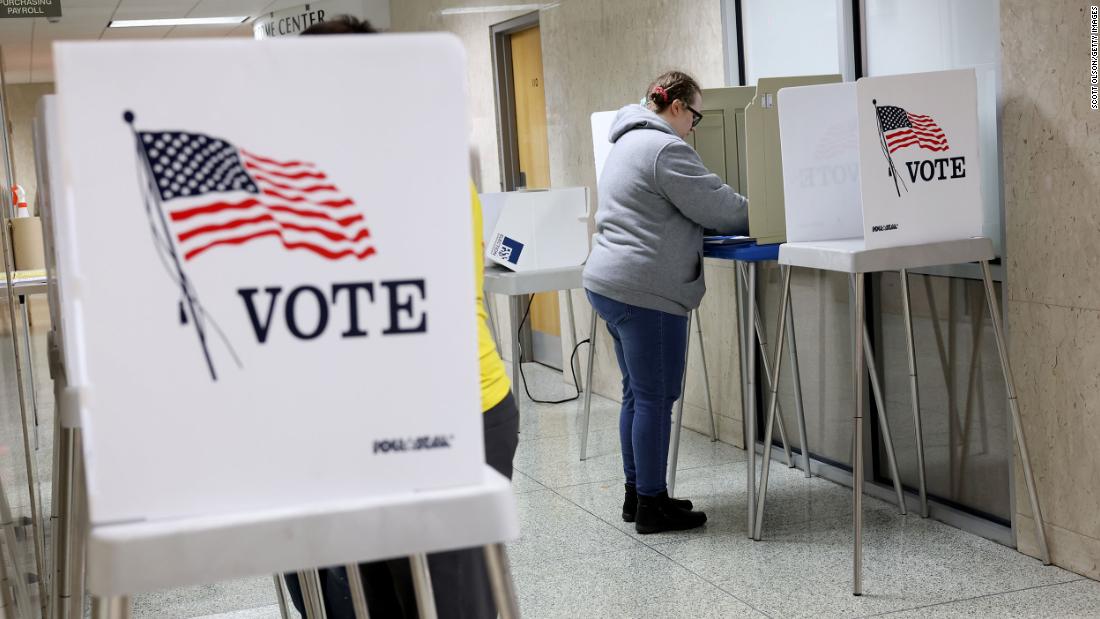
Just a day before Election Day, more than 41 million people have already cast their ballots. And in several states — including two battleground states — more people have voted before Election Day than in 2018, according to data from election officials, Edison Research and Catalist.
In Georgia and Wisconsin, more people voted before Election Day than they did four years ago. In the Peach State, where Democrats will try and hold onto a key Senate seat, more than 2.5 million people have already voted. In 2018, a total of more than 2.1 million Georgia voters cast their ballots before Election Day.
It’s a similar story in Wisconsin where Republicans will try to keep their Senate seat. More than 715,000 Wisconsinites already voted in the 2022 midterms, while less than 580,000 cast their ballots before Election Day in 2018.
Pre-election voter totals aren’t predictive of what total turnout will be in this election cycle —and voting trends have changed since Covid-19 created new opportunities for many voters to vote before Election Day.
Pre-election voting is still well behind 2020 levels, which isn’t a surprise, given the larger voter turnout for presidential elections and the unusual pandemic circumstances.
And Democrats are more likely to vote early — either by mail or early in-person — while Republicans are more likely to vote in person on Election Day.
Connecticut, Delaware, Kentucky, Louisiana, Maine, Massachusetts, Michigan, New York, Pennsylvania, Rhode Island, South Carolina, Vermont and Virginia have also already surpassed the total number of pre-election votes they recorded in 2018.
In most of these states, including Michigan, New York and Pennsylvania, no-excuse early voting was not available to voters four years ago.
In the key states this election cycle where voters register by party, just one state — Arizona — has had a larger share of Democrats cast a ballot than at this point in the cycle in 2018.
Arizona Democrats make up 38% of those who have cast a ballot already, that’s up from the 36% share they had in 2018, according to data from Catalist, a company that provides data, analytics and other services to Democrats, academics and nonprofit issue-advocacy organizations and is giving insights into who is voting before November.
The Republican share of pre-election turnout has dropped in the state with 37% of pre-election votes being cast by Republicans. In 2018, Arizona Republicans had cast 41% of pre-election votes at the same point in the cycle.
Democrats in Ohio also have cast a larger share of pre-election votes than they did in 2018. Democrats made up a 32% share of the pre-election electorate in Ohio four years ago, and this time around they have made up 34%. Republican share dropped from 31% to 29%.
Many Republican leaders, like former President Donald Trump, have questioned some pre-election voting methods like early voting, and have encouraged Republicans to vote on Election Day.
In one potentially competitive state, Republicans make up a larger share of those who cast a pre-election ballot than Democrats.
In Florida, where Republican Gov. Ron DeSantis and GOP Sen. Marco Rubio are both favored to win re-election, 43% of those who already cast a ballot are Republicans, while 36% are Democrats. At this point in 2018, when the state narrowly elected DeSantis and ousted a Democratic senator, 41% of those who cast ballots were Republicans and 40% were Democrats.
The pre-election electorate is also slightly younger in most key states than it was at this point in 2018.
In Arizona, Georgia and Wisconsin, a larger share of voters under the age of 40 have already cast a ballot than they did at this point four years ago.
In Arizona, more than 15% of those who have already voted are younger than 40. In 2018, that demographic made up 14% of the pre-election electorate.
And in Georgia, a larger increase is seen. In 2018, more than 17% of those who had cast a ballot at this point were under the age of 40. That share is now more than 19% for this election.
In Wisconsin, voters under 40 make up 13.5% of those who have already voted, while four years ago that demographic was about 12% of the pre-election electorate.
Most of these states saw the initial increase in younger voters casting ballots before Election Day between 2018 and 2020, when Covid-19 precautions expanded pre-election voting opportunities.

